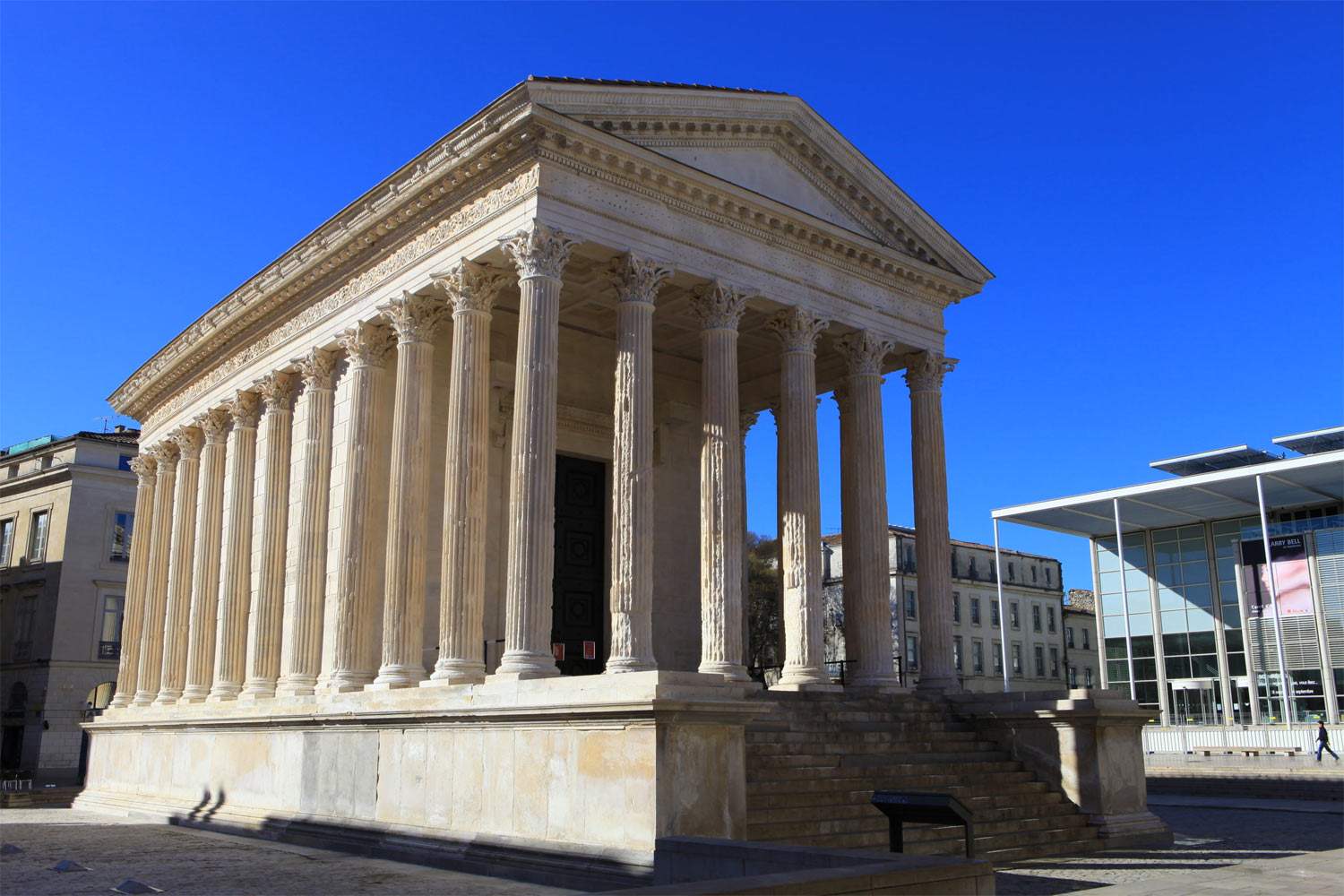France, Nîmes's Maison Carrée applies for World Heritage Site status
French Minister of Culture Roselyne Bachelot-Narquin announced the nomination of the Maison Carrée in Nîmes, the Occitan city’s most famous and important monument, to the UNESCO World Heritage List. Built in the early first century AD, the Maison Carrée is one of the best-preserved Roman temples in existence. A monument of remarkable architectural quality, it testifies, through the historical circumstances of its creation, as well as through the political importance of its consecration and the stylistic choices that presided over its development, to the values of lasting peace, harmony and prosperity that theRoman Empire sought to promote and ensure.
Although rectangular in shape (“Maison Carrée” in fact means “Square House”), the temple has borne this name since the 16th century: at that time, in fact, the rectangle was considered a “long square.” The building is dedicated to the worship of the imperial family. Inspired by the temples of Apollo and Mars Ultor in Rome, the Maison Carrée is striking in its harmonious proportions and majesty. In Roman times it stood south of the forum of ancient Nemausus, a vast public space that formed the heart of the city. Over the entire southern part of the forum was a platform raised above the level of the square, elements of which are still visible on either side of the temple steps. On the platform was a large stone altar, no longer extant, which was used for ceremonies.
Like all Roman temples, the building rests on a podium. The stones used to build the Maison Carrée came from different quarries scattered around the city: those of the podium and staircase are from Barutel stone, while those of the monument’s columns, walls, and entablature come from the Bois des Lens quarries. This is a very dense white limestone of a quality close to marble. The interior of the temple has only one room, the cella, preceded by a pronaos. The roof of the pronaos is supported by 10 columns, 6 of which are on the front. The columns, Corinthian, are 9 meters high. Above the capitals, the entablature is decorated with a foliate frieze directly inspired by models made in Rome at the same time. As for the roof, the Maison Carrée is covered with alternately flat and arched tiles, the tegulae and imbreces.
The Maison Carrée has had a public and religious function since its construction and testifies to the importance of the imperial cult within the new society that was being formed at the time. This dynastic cult was a unifying element among the hundreds of cities in the empire, which constituted an immense mosaic of peoples and cultures. Imperial worship took the form of highly ritualized official ceremonies. The officiating priests were notables appointed by the city, who concurrently with the ceremonies also organized festivals accompanied by large banquets and gladiatorial fights offered with their own funds. The high priest (the flamen) was in charge of this cult. In contrast, the worship of empresses (Augustae) was provided by a high priestess (flaminica diale): this was the only official function reserved for a woman in a Roman city.
The interior of the Maison Carrée is currently being renovated until spring 2022. This redevelopment will offer a new visitor experience while respecting the building’s original architecture and restoring its interior volume. Enriched by new evolving storytelling modes and new technologies, visitors will be able to discover the building and its history along the way. This new development project also meets the scientific requirements of the monument’s candidacy for inscription on the UNESCO World Heritage List.
France intends to bring as the “outstanding universal value” (required by UNESCO) of the Maison Carrée the demonstration that this monument, built during the lifetime of Emperor Augustus in the first century AD, represents one of the oldest, and one of the best preserved expressions of a Roman temple consecrated to imperial worship. The nomination will be considered by the UNESCO World Heritage Committee during its June/July 2023 session. The next session of the World Heritage Committee, which will meet June 19-30, 2022 in Kazan, Russia, will then also consider another French candidacy, but concerning natural heritage, namely the site “forests and volcanoes of northern Martinique.”
Image: the Maison Carrée in Nîmes. Photo Provence tourist board
 |
| France, Nîmes's Maison Carrée applies for World Heritage Site status |
Warning: the translation into English of the original Italian article was created using automatic tools. We undertake to review all articles, but we do not guarantee the total absence of inaccuracies in the translation due to the program. You can find the original by clicking on the ITA button. If you find any mistake,please contact us.





























